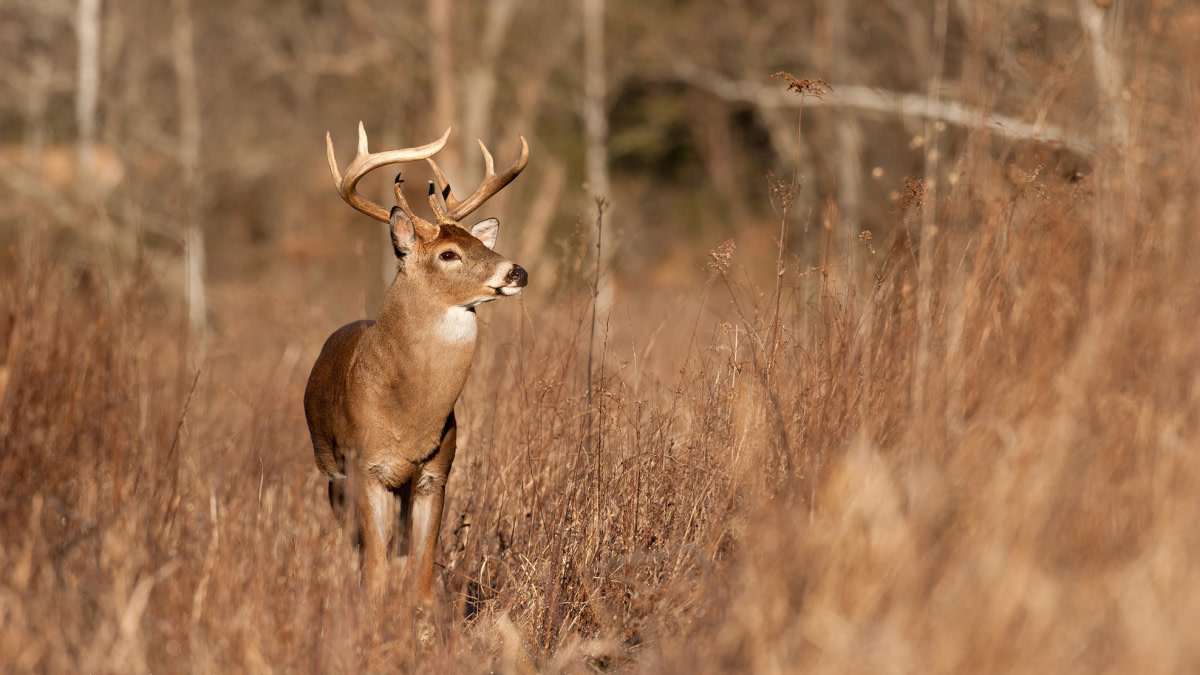
It’s November 11. Temps are in the mid-20s. You took a week’s vacation, have hunted seven straight days, and have yet to lay eyes on a shooter buck. After eating the sandwich you packed for lunch, you climb down to relocate for the evening’s hunt. Shortly after taking your bow off the tether, you hear the kind of footsteps that can only mean one thing—a heavy-footed mature buck on a mid-day mission. Before you know it, he has you pegged at eye level from a mere 10 yards. You have an arrow nocked and come to full draw. The only shot you see is a straight-on frontal. Knowing there are only seconds before he leaves the scene, your season balances on your next decision. Are you taking the shot?
Anatomy of the Frontal Shot Before considering a frontal shot, it’s imperative to understand the anatomy at play.
“Depending on the size of the deer, the frontal ‘kill zone’ that encompasses the heart/lung combo is only about 4 to 5 inches top to bottom and roughly the same size side to side,” Matt Ross of the National Deer Association told MeatEater. “Most folks would be pretty surprised how low the spinal column dips into the body at the base of the neck; it’s basically at the halfway point on the chest, when looking at a deer straight on.”
With an arrow, Ross said, “You would need to slip the shot below that point to enter the vitals without hitting bone first. If someone did make it into that tiny space, the arrow would first encounter the trachea, esophagus, and carotid artery, which are all in the neck and below the spine; behind that lays the frontal lobes of the lungs and eventually the heart.”
And if you're able to do that, it'll be one of the quickest deaths and shortest track jobs you'll ever have bowhunting deer. But that doesn't mean it's always a gimme shot.
Important Considerations To ensure your arrow reaches the vitals, shot angle becomes extremely important. If the deer is quartering toward you, the kill zone decreases in size and becomes protected by the shoulder blades. In terms of vertical angles, too steep a shot angle also decreases the size of the vital opening. From elevated positions, such as in a treestand, the neck becomes an issue and begins to block the vital opening entirely. In order to confidently reach the vitals, frontal shots are best suited for ground level encounters.
The next thing to consider is shot distance and animal behavior. First, can you consistently hit a 4-inch circle? Sure you can, with calm nerves and perfect archery-range conditions. Add 150 inches of antler and a dose of adrenaline and things change dramatically. Next, study the animal’s demeanor. Is the deer on pins and needles, clued in to your existence? Unless the shot is extremely close, the buck is likely to react and whirl at the sound of your shot.
Another consideration is your bow and arrow setup. Before taking a frontal shot, make sure your setup has enough authority to get the job done if you come in contact with muscle or bone. While you don’t need an 80-pound bow to execute this shot, lower draw weights and shorter draw lengths decrease the margin for error. Additionally, a good fixed-blade broadhead is important for frontal shots. A cut-on-contact point will increase penetration should you hit ribs or dense muscle. That doesn't mean a mechanical won't kill a deer that's facing you, but it's certainly going to get less penetration on a shot that needs all the penetration it can get.
Take the Shot or Pass “The NDA has always advised folks to pass on frontal shots when using archery equipment,” Ross said. “You can definitely kill deer with a well-placed arrow, but the margin for error is so much smaller on frontal shots compared to broadside or quartering-away shots. With a firearm and the speed and momentum of a bullet, it’s not as large of a concern to go through bone or beat the reaction time. However, with an arrow the risks are much higher. More times than not, it’s better to wait on a better opportunity when the deer turns.”
All things considered, frontal shots are certainly high-risk, high-reward. This shot is best reserved for ground level, close-range encounters, executed only by archers with nerves of steel and consistent accuracy. In the right scenario, with the right setup, the results can be extremely deadly. But a nervous deer at 30 yards or flinch when you release the arrow could make for an impossible track job and lost buck. Consider your capabilities and situation, because only you can decide if the frontal shot is ethical and warranted in the moment of truth.
Feature image via Matt Hansen.





